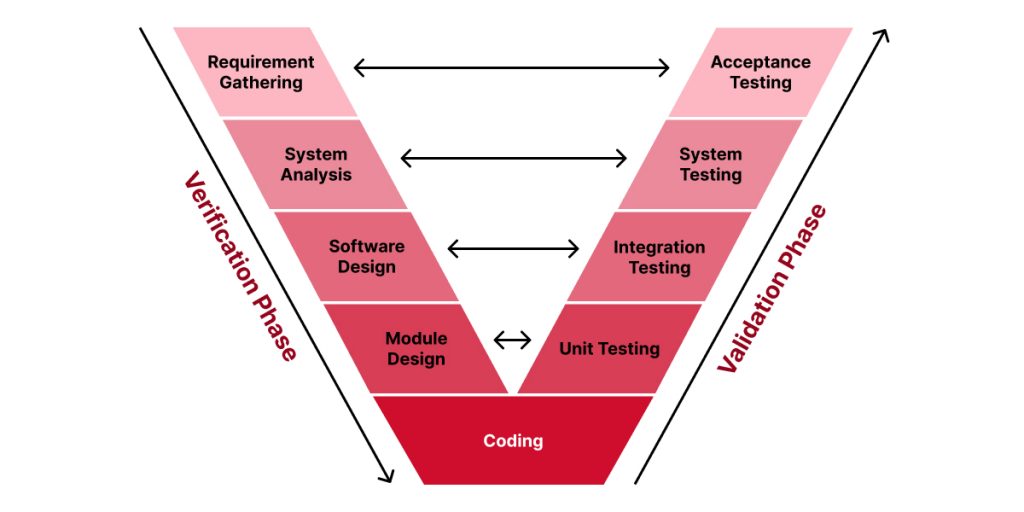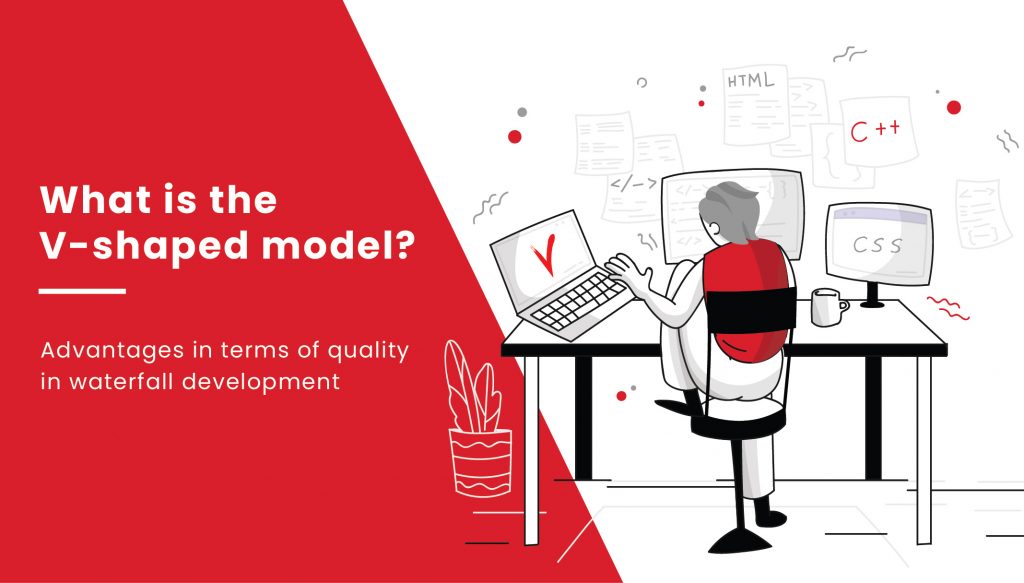Oct 04, 2023 JIN
V-model: Advantages in terms of quality in waterfall development
The V-model or V-shaped model in software development is known as a common methodology used mainly in waterfall software development and testing.
This article will discuss the V-shaped model and the benefits this model brings to the delivery of quality software products.
What is the V-model (V-Model)?
The V-model, also known as the Verification and Validation model, is an SDLC model mainly used in waterfall development, in which the development and testing processes are arranged in pairs according to their level of detail, and the corresponding relationship between each phase is clearly indicated.
In the V-shaped model, development and testing processes have the same level of detail, which helps ensure product quality by appropriately recognizing and setting the level, scope, and content of testing for the deliverables of each process developed and designed based on the waterfall model.
The V-shaped model is represented by the following diagram, in which the waterfall model is folded back at the implementation process, with the left side representing the development process and the right side representing the testing process.

Quality benefits of using the V-shaped model
Utilizing the V-shaped model in waterfall software development projects can provide various benefits.
1. Easy to determine appropriate test content
The V-shaped model has a corresponding testing level for each development phase. Therefore, it is easy to tell which test level should be conducted at which phase.
For example, in unit testing (unit and component testing), testing is performed during the Module design phase, where the system breaks down into small modules.
The V-shaped model effectively determines the appropriate test content according to the testing process since this correspondence is explicitly stated in the V-shaped model.
2. Easier to manage the progress of the testing process
When there is a clear associated phase between development and testing, it’s easier for businesses to manage the progress of the testing process.
It is also easier for all parties involved in the project to be aligned, thereby reducing the risk of misunderstanding the work content, schedule, and deviations from the plan.
In addition, revising plans for subsequent processes based on each phase’s results helps refine the plans and more accurately grasp and predict the project’s progress.
3. Reduce the risk of “rework”
One of the big causes of cost overruns and schedule delays in software development is so-called rework.
As an extreme example, if a defect occurs during acceptance testing, which is positioned in the latter half of the testing process, and the defect is a unit-level defect from the previous process, a review of detailed design may be required, and the associated defect correction and its impact may be extensive, leading to significant losses in cost and time. This can lead to a significant loss of cost and time.
The risk of rework can be minimized by using a V-shaped model to define the level of each test, separating the phases, and proceeding to the next step only after sufficiently detecting and correcting the defects in each step.
Reducing the risk of rework may be the most significant benefit in terms of cost and schedule impact.
4. Reduce the cost of correcting defects
Each verification phrase in the V-shaped model has a corresponding test level. If testing has been conducted with unclear test levels, not only does it take time to investigate which level is the cause of the defect (e.g., whether the defect is in the component itself or the coupling part), but it is also difficult to identify the scope of the defect correction, and as a result, other parts of the system may also be affected. In addition, it is difficult to identify the scope of the defect correction, and as a result, there is a risk that other parts of the system may be affected by the defects.
In the worst-case scenario, the defect correction may affect various parts of the system, resulting in a case in which one defect after another is degraded to the point of being uncontrollable.
Therefore, it is crucial to clearly define the testing process for each level and “build up quality” through testing at each level.
Conclusion
The V-shaped model itself is widely known as a general method for waterfall development, but it also offers significant advantages in terms of software quality and resulting efficiency.
By incorporating the V-model into the development and testing process and promoting its implementation within a project, we believe it will improve quality and efficiency.
At SHIFT ASIA, we plan, design, and execute tests based on the V- and W-shaped models for waterfall development projects.
ContactContact
Stay in touch with Us








